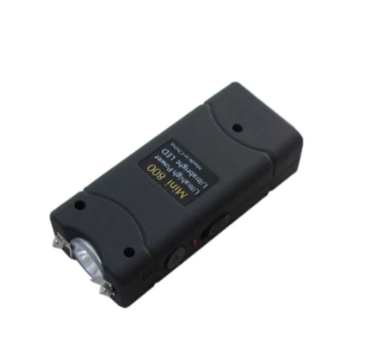Maximizing Stun Gun Effectiveness: Essential Best Practices for Safe and Responsible Use
Introduction
Stun guns are powerful non-lethal self-defense tools, designed to temporarily incapacitate an attacker by delivering a high-voltage electrical shock. While effective, their proper use is crucial to ensuring both personal safety and legal compliance. This guide outlines key best practices for using stun guns effectively and responsibly in real-world self-defense situations.
Understanding How Stun Guns Work
Before deploying a stun gun, it is essential to understand its mechanism of action:
⚡ High-Voltage, Low-Amperage Shock
Stun guns deliver a high-voltage, low-current shock that disrupts the attacker’s nervous system, causing:
-
Muscle contractions
-
Loss of coordination
-
Intense pain and confusion
-
Temporary incapacitation
? Optimal Target Areas
For maximum effect, aim for large muscle groups:
-
Shoulders
-
Chest
-
Abdomen
-
Upper thighs
❌ Avoid sensitive areas like the neck, face, or groin to reduce risk of unintended injury or legal repercussions.
⏱ Duration of Contact
The effectiveness depends on how long the stun gun is applied:
-
<1 second: Startling and painful
-
1–2 seconds: Muscle spasm and disorientation
-
3+ seconds: Temporary loss of balance and control
Always follow your device’s manufacturer recommendations.
Best Practices for Effective Deployment
? 1. Situational Awareness
Before deploying a stun gun:
-
Scan the environment for escape routes
-
Identify multiple threats if present
-
Use verbal warnings or de-escalation if safe and feasible
?♂️ 2. Maintain a Safe Operating Distance
Position yourself to:
-
Keep arm’s-length or slightly more from the attacker
-
Avoid close-quarters grappling
-
Allow time to retreat after deployment
? 3. Aim with Purpose
Target large, muscular areas for quick and effective impact.
✅ Do:
-
Chest
-
Upper back
-
Thighs
❌ Avoid:
-
Head
-
Neck
-
Groin
? 4. Ensure Proper Contact Duration
For maximum effect:
-
Maintain contact for 2–3 full seconds
-
Short contact may only cause pain without incapacitation
-
Practice control and aim under pressure
? 5. Post-Deployment Actions
Immediately after use:
-
Create distance from the attacker
-
Seek help or call authorities
-
Report the incident to local law enforcement
Legal and Ethical Use Guidelines
Stun gun usage is governed by law and should be handled responsibly:
⚖️ 1. Know the Law
-
Stun guns are restricted or banned in some jurisdictions
-
Research local, state, or national regulations before purchasing or carrying
-
Obtain necessary permits or certifications if applicable
? 2. Use Only in Legitimate Self-Defense
-
Deploy only when facing an immediate and credible threat
-
Never use for intimidation, retaliation, or in non-dangerous situations
-
Use of force must be proportionate to the threat
? 3. Always Report Usage
-
In most regions, use of a stun gun must be reported
-
Prepare a clear explanation of events
-
Provide any available evidence or witness statements
Maintaining Your Stun Gun
Proper care ensures readiness and safe performance:
-
? Battery Check: Regularly inspect battery life or charge status
-
? Routine Cleaning: Wipe down contact points as per manufacturer’s instructions
-
? Safe Storage: Keep in a secure, dry place away from children or unauthorized users
Conclusion
A stun gun is only as effective as the person using it. With the right knowledge, preparation, and responsibility, it becomes a powerful tool for non-lethal self-defense. Following best practices ensures your stun gun is a lifesaving asset, not a liability.
Next Steps
? Get Trained
Invest in professional instruction on stun gun use and personal protection strategies.
? Read Your User Manual
Familiarize yourself with the specific functions and features of your device.
? Review Local Laws
Understand how stun gun usage is regulated in your area.
Jiangsu Kelin encourages responsible ownership and supports users through product education, training resources, and safe-use guidelines. Your safety—and that of others—depends on responsible, legal, and informed use.
 En
En
 CN
CN
 AR
AR
 NL
NL
 FR
FR
 DE
DE
 HI
HI
 IT
IT
 JA
JA
 KO
KO
 PT
PT
 RU
RU
 ES
ES
 ID
ID
 VI
VI
 TH
TH


